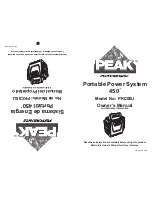
STARTING AND OPERATING
83
To Decrease Speed
When the Speed Control is set, you can
decrease speed by tapping the speed control
lever down (-).
The speed decrement shown is dependent on
the speed of U.S. (mph) or Metric (km/h) units:
U.S. Speed (mph)
Tapping the speed control lever down (-) once
will result in a 1 mph decrease in set speed.
Each subsequent tap of the lever results in a
decrease of 1 mph.
If the lever is continually held down, the set
speed will continue to decrease until the
lever is released, then the new set speed will
be established.
Metric Speed (km/h)
Tapping the speed control lever down (-) once
will result in a 2 km/h decrease in set speed.
Each subsequent tap of the lever results in a
decrease of 2 km/h.
If the lever is continually held down, the set
speed will continue to decrease until the
lever is released, then the new set speed will
be established.
T
O
A
CCELERATE
F
OR
P
ASSING
Press the accelerator as you would normally.
When the pedal is released, the vehicle will
return to the set speed.
T
O
R
ESUME
S
PEED
To resume a previously set speed, push the
CANCEL/RESUME button, located on the end of
the Speed Control lever, and release. Resume
can be used at any speed above 18 mph
(30 km/h).
T
O
D
EACTIVATE
A soft tap on the brake pedal, pushing the
CANCEL/RESUME button on the end of the
Speed Control lever, or normal brake pressure
while slowing the vehicle will deactivate the
Speed Control without erasing the set speed
memory. Rotating the end of the Speed Control
lever to the O (off) position, or placing the
ignition in the STOP (OFF/LOCK) position,
erases the set speed memory.
PARKING SENSORS — IF EQUIPPED
The vehicle’s parking sensors are located in the
rear bumper, and will detect the presence of
any obstacles near the rear part of the vehicle
while moving in REVERSE gear. The driver is
then informed through an intermittent acoustic
signal.
Parking Sensors
A
COUSTIC
S
IGNAL
When REVERSE gear is engaged, and there is
an obstacle behind the vehicle, an acoustic
signal is emitted which varies according to the
distance of the bumper from the obstacle.
The frequency of the acoustic signal:
Increases as the distance between vehicle
and obstacle decreases, culminating in a
continuous acoustic signal when the
distance is less than approximately
12 inches (30 cm).
Decreases if the distance from the obstacle
increases, until the signal ceases entirely.
Remains constant if the distance between
vehicle and obstacle remains unchanged; if
this situation concerns the side sensors, the
signal will stop after approximately three
seconds, for example, in the event of parking
along a wall.
If several obstacles are detected by the
sensors, only the nearest one is considered.
5
20_4C_OM_EN_USC_t.book Page 83
Содержание 4C Spider 2020
Страница 162: ......
















































